Aquatic Invertebrates
Media
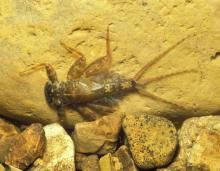
Species Types
Scientific Name
There are hundreds of species in North America.
Description
Mayfly larvae, or nymphs, live from months to years under water, breathing through gills, and the adults fly around in the air, mating, living for only a day or two.
Media
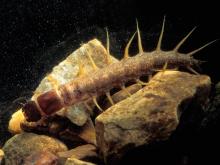
Species Types
Scientific Name
Chauliodes, Neohermes, and Nigronia spp. (in eastern US)
Description
Fishfly larvae look a lot like their cousins the hellgrammites, but they lack cottony or hairy gill tufts along the abdomen, and they have 2 short, fleshy tails at the hind tip.
Media
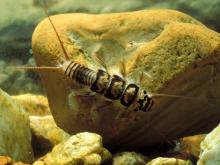
Species Types
Scientific Name
There are hundreds of species in North America
Description
Stonefly larvae are aquatic and somewhat resemble the larvae of mayflies and damselflies. Their presence usually indicates good water quality.
Media

Species Types
Scientific Name
Tabanus, Chrysops, and related genera
Description
The larvae of horse and deer flies are fairly straight, segmented, wormlike maggots that are tan, whitish, or brownish. They are aquatic or live in mud, and most are predaceous.
Media
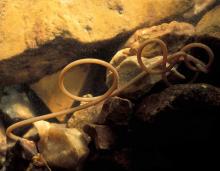
Species Types
Scientific Name
About 350 species scientifically described.
Description
Adult horsehair worms can be nearly 3 feet long and live in water. They are practically featureless, smooth, aquatic worms that writhe into knots and curls.
Media

Species Types
Scientific Name
Dugesia, Planaria, and other genera
Description
Unlike their parasitic cousins in the flatworm group, turbellarians, or planarians, are tiny carnivores or detritus-eaters that glide smoothly across submerged leaves and other objects.
Media
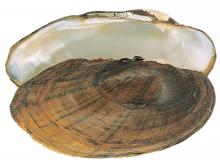
Species Types
Scientific Name
Lampsilis siliquoidea
Description
The fatmucket was a favorite species harvested for the button industry in the early 1900s.
Media

Species Types
Scientific Name
Quadrula quadrula
Description
The mapleleaf spawns in the summer, using catfish as a host.
Media

Species Types
Scientific Name
Utterbackia imbecillis
Description
Unlike most other freshwater mussels, this species is hermaphrodic: An individual mussel can be both male and female.
Media

Species Types
Scientific Name
Lampsilis cardium
Description
The plain pocketbook is one of the most common and widespread mussels in our state. It is oval, relatively large, and occurs frequently.
See Also
About Aquatic Invertebrates in Missouri
Missouri's streams, lakes, and other aquatic habitats hold thousands of kinds of invertebrates — worms, freshwater mussels, snails, crayfish, insects, and other animals without backbones. These creatures are vital links in the aquatic food chain, and their presence and numbers tell us a lot about water quality.





















